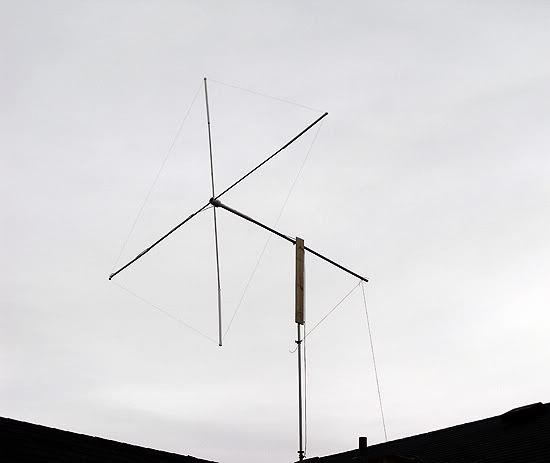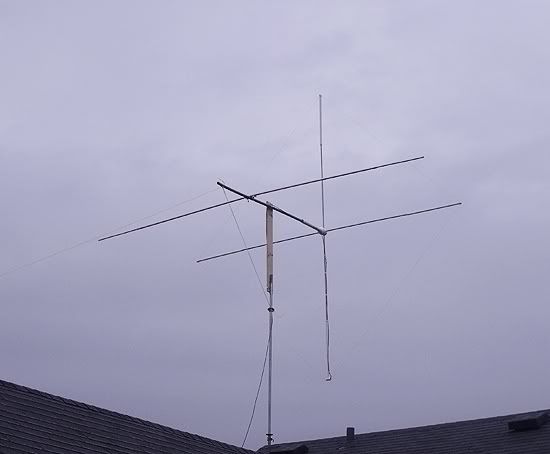Homer, I'll try this one tomorrow, but I don't think it will be a true quad when finished, like 'Doc suggested.
Check this out.
http://www.signalengineering.com/Th8.jpg
Now you do see what I mean. That's fed at the sides, too.
Homer, I'll try this one tomorrow, but I don't think it will be a true quad when finished, like 'Doc suggested.
Check this out.
http://www.signalengineering.com/Th8.jpg
Sorry about the 'NVIS'/'Nevis' thingy, even misspelled you get the idea.
I used an antenna called a NVIS to do phone patches during 'Desert Storm'. That 'short range' type of qualification/classification is very vague to say the least. Admittedly, the propagation was much 'better' than now, but still, that 'straight up' thingy isn't as sure a bet as you might think.
About that 'diamond' shaped quad thingy. Yes, it can work and be directional. There are several antennas of that sort. Would two quads be better than using two other types of antennas (or more than two)? I don't know, but I sort of doubt it. It would be the equivalent of two single element quad antennas pointed in different directions. Using dipoles instead of a loop means that the resulting antenna would be a two element directional antenna (Super Scanner??). Different shaped/styles of antennas have different characteristics in them selves. I like loops, but they get sort of bulky/cumbersome, you know?
- 'Doc
no no no, you have to look at the green dot! you would have a 12 degree angle at the highest gain lobe of 5.56dbi or about 3.5dbd!
hey marconi, can you do that model looking straight down on it from space? i want to see the polar pattern.
no no no, you have to look at the green dot! you would have a 12 degree angle at the highest gain lobe of 5.56dbi or about 3.5dbd!
hey marconi, can you do that model looking straight down on it from space? i want to see the polar pattern.
From the looks of that radiation pattern, it looks nearly perfectly omni-directional.


